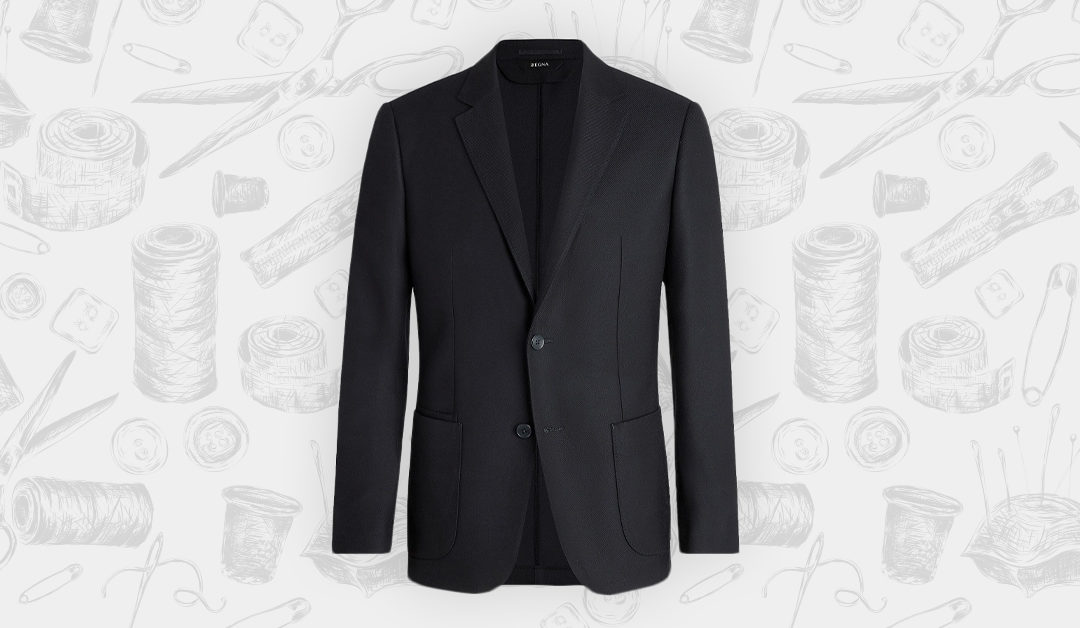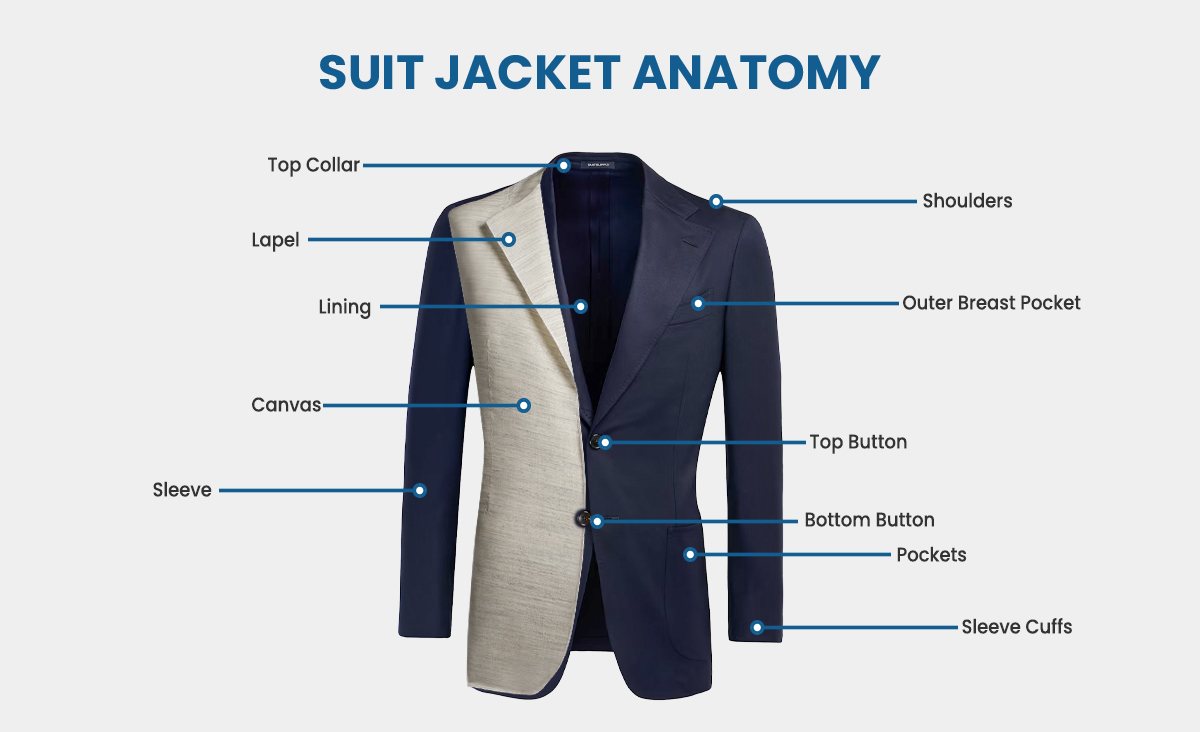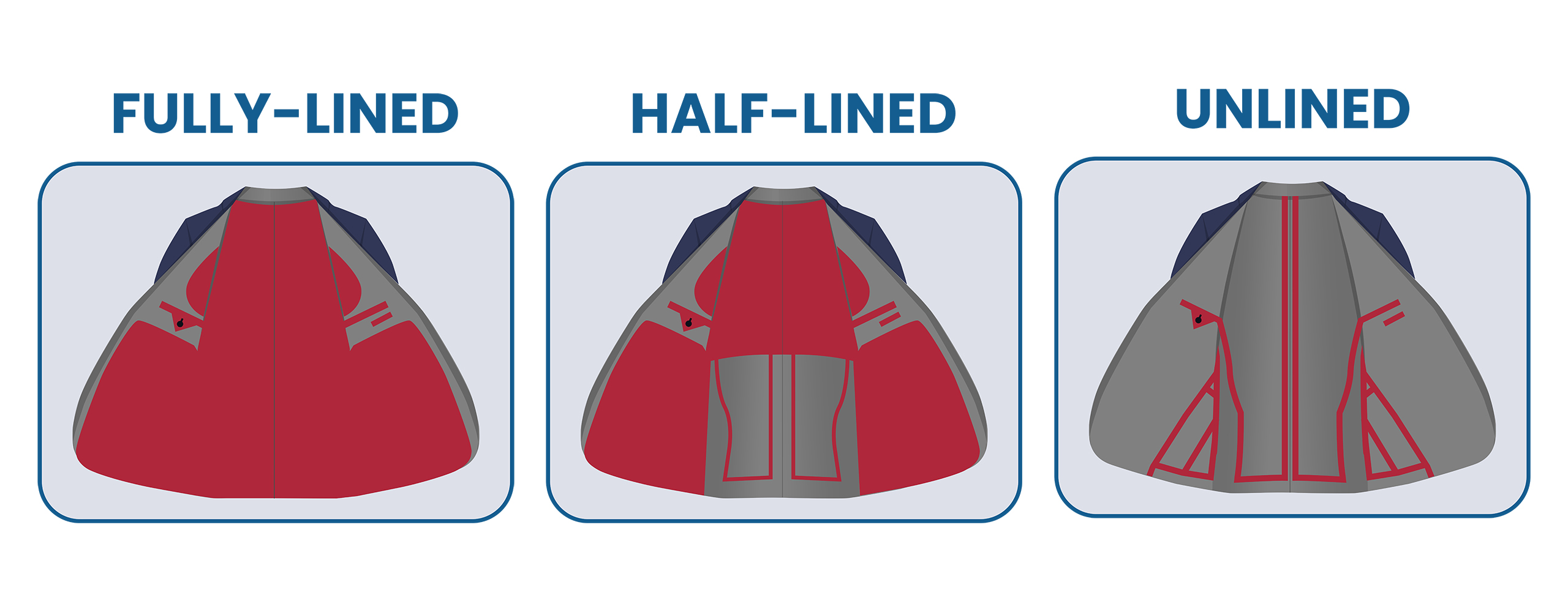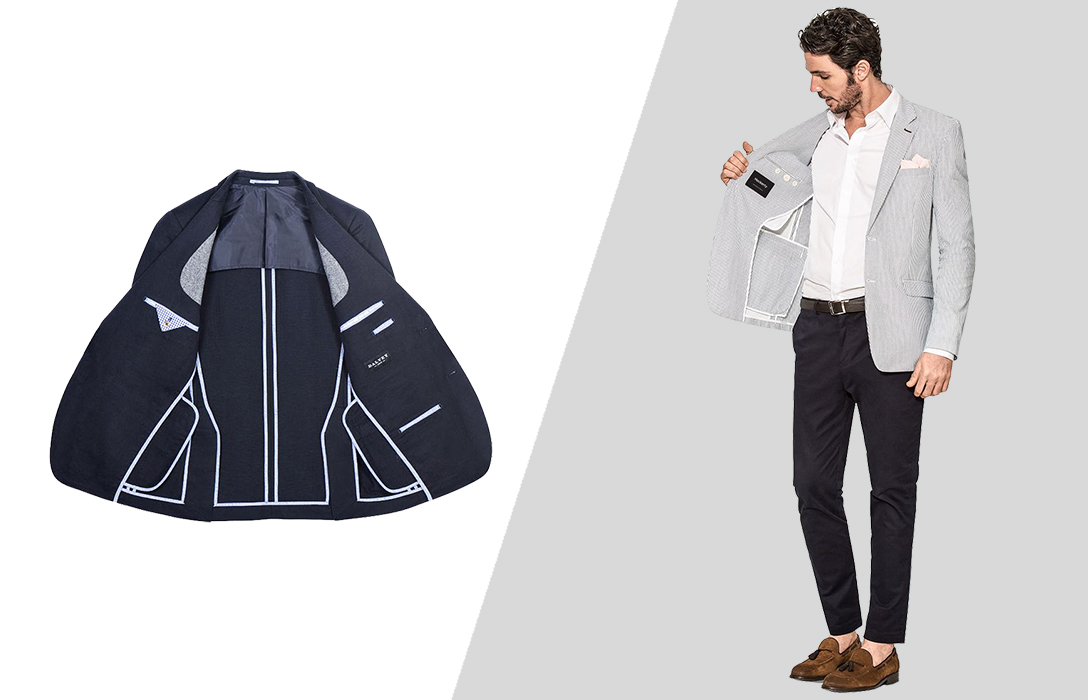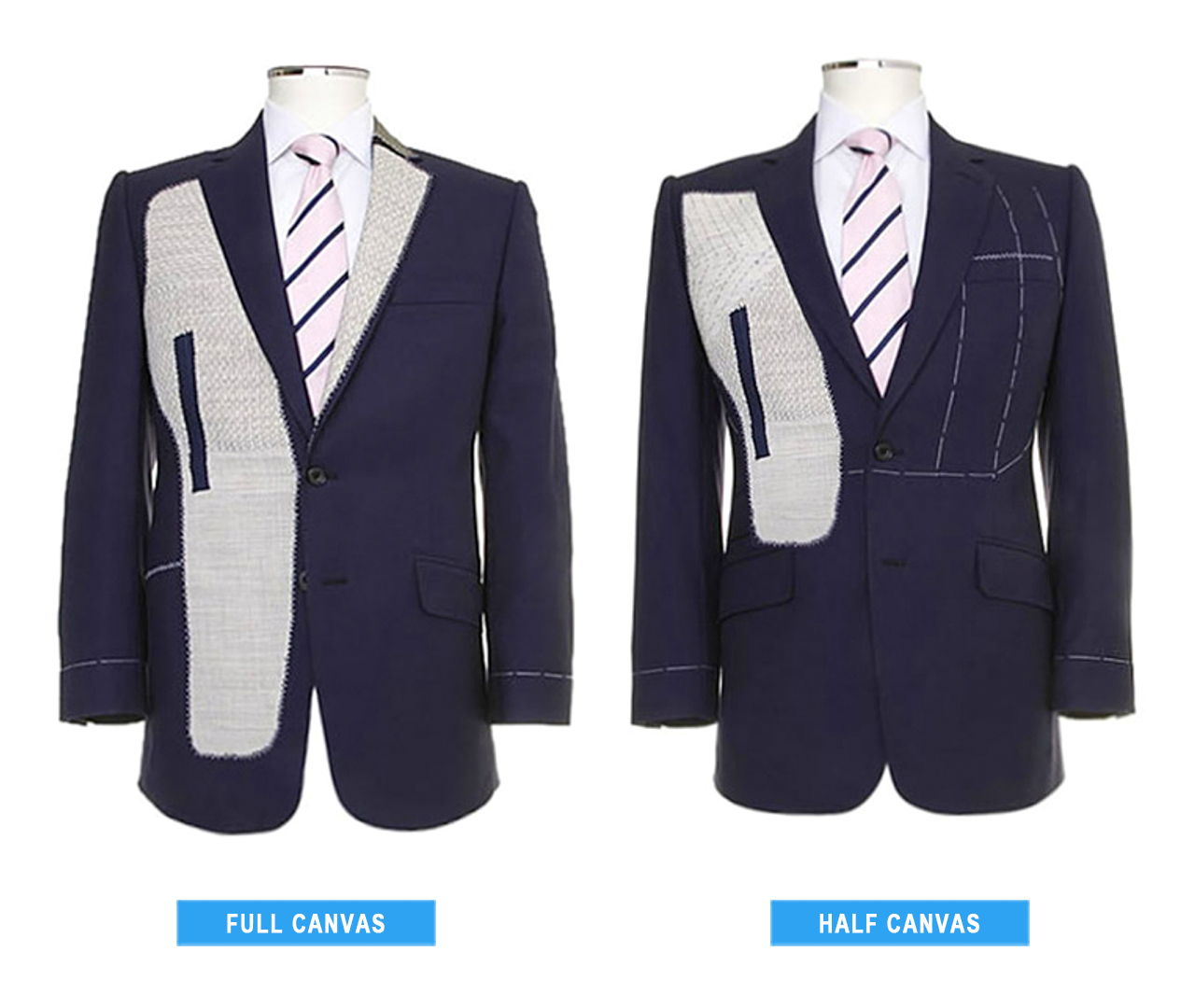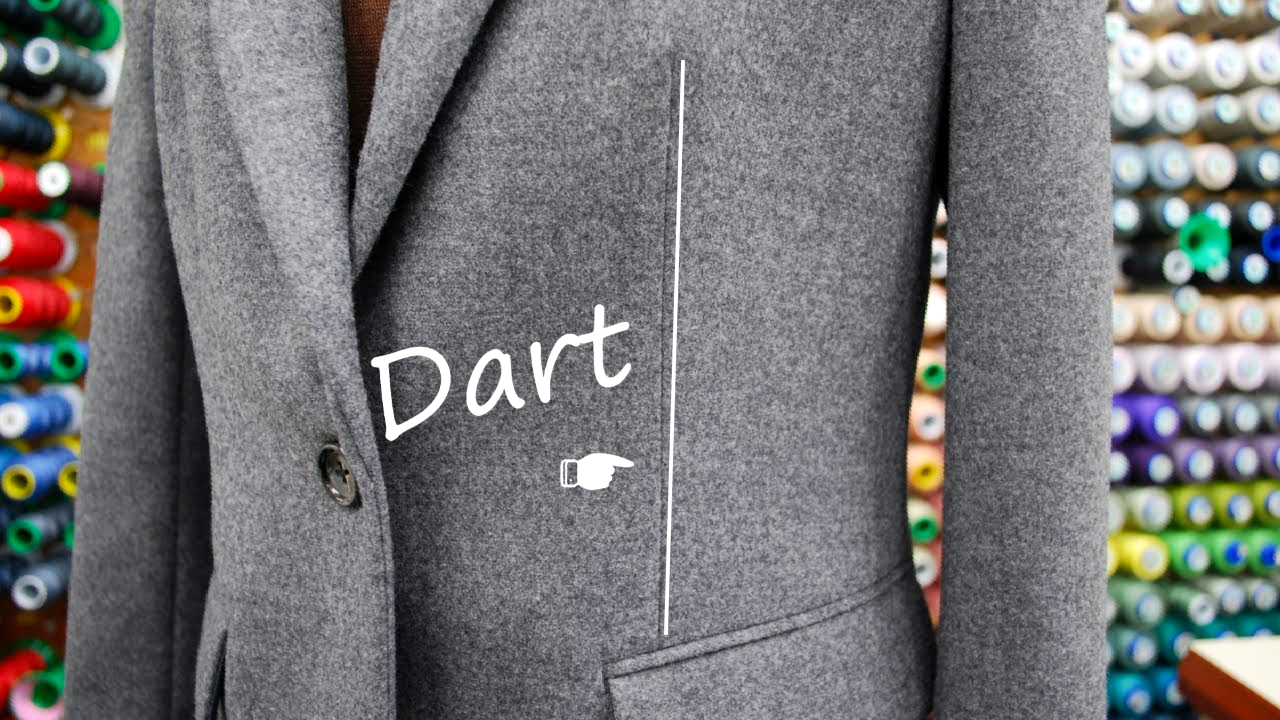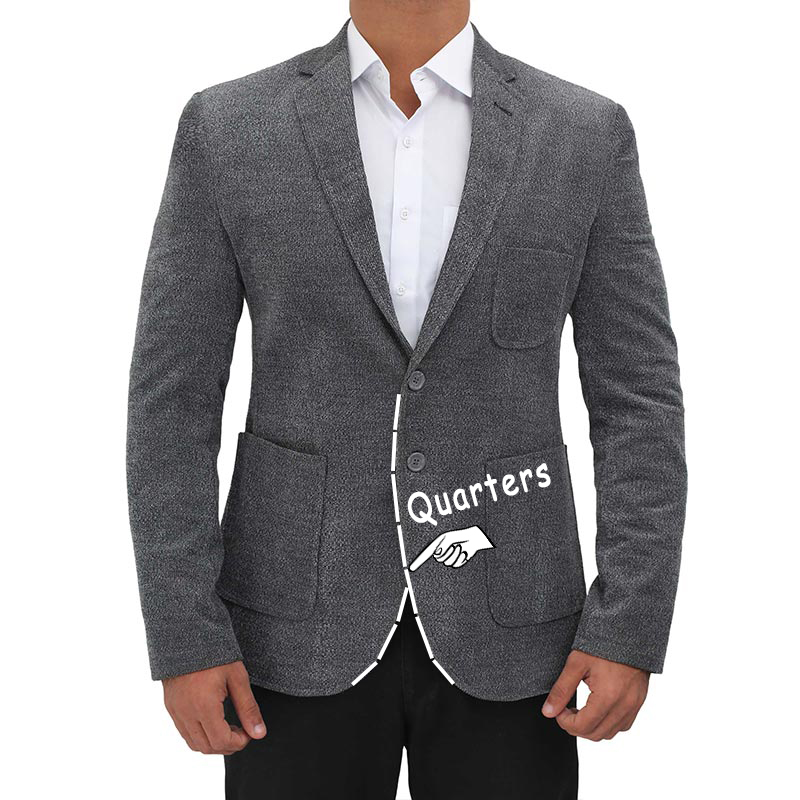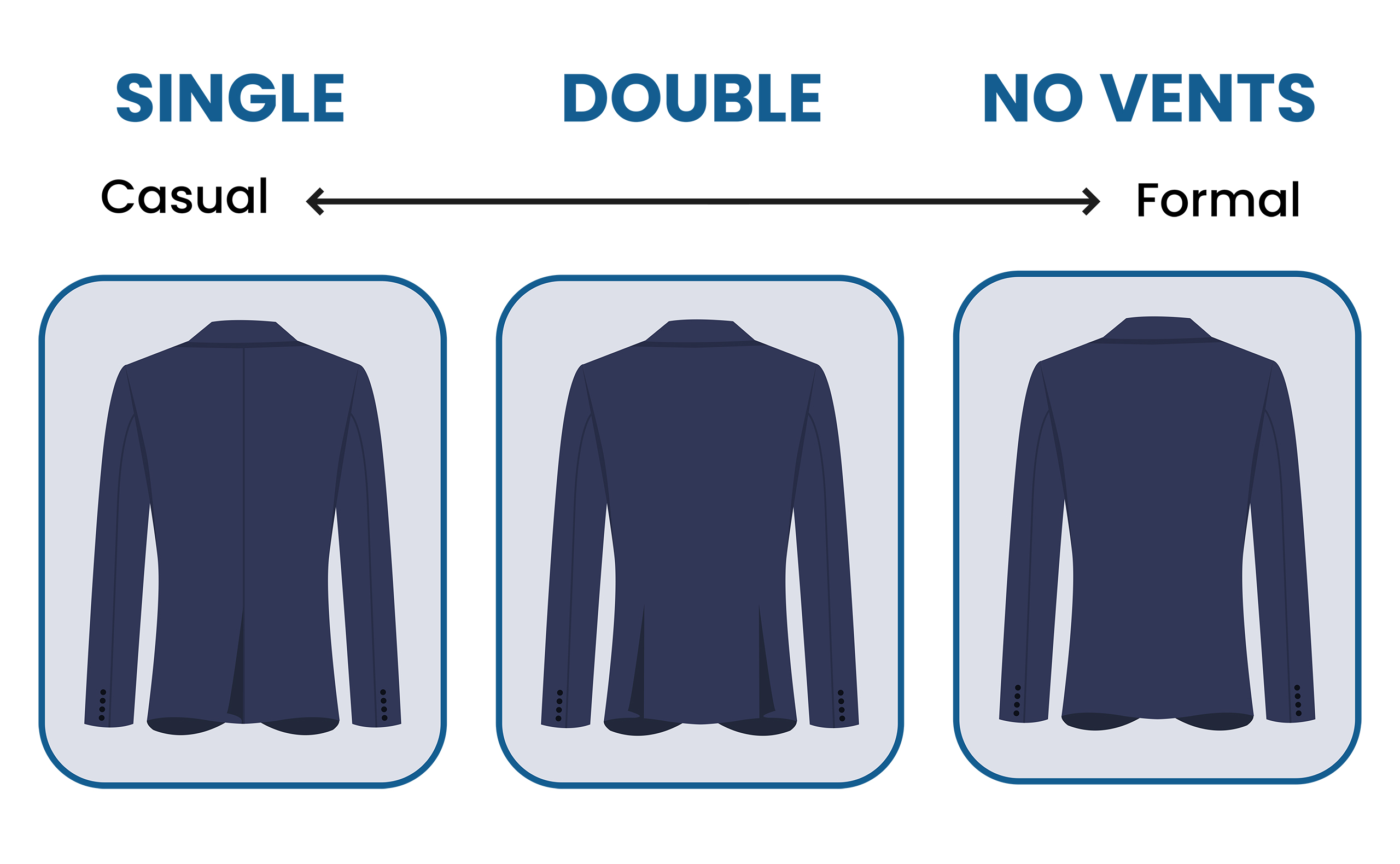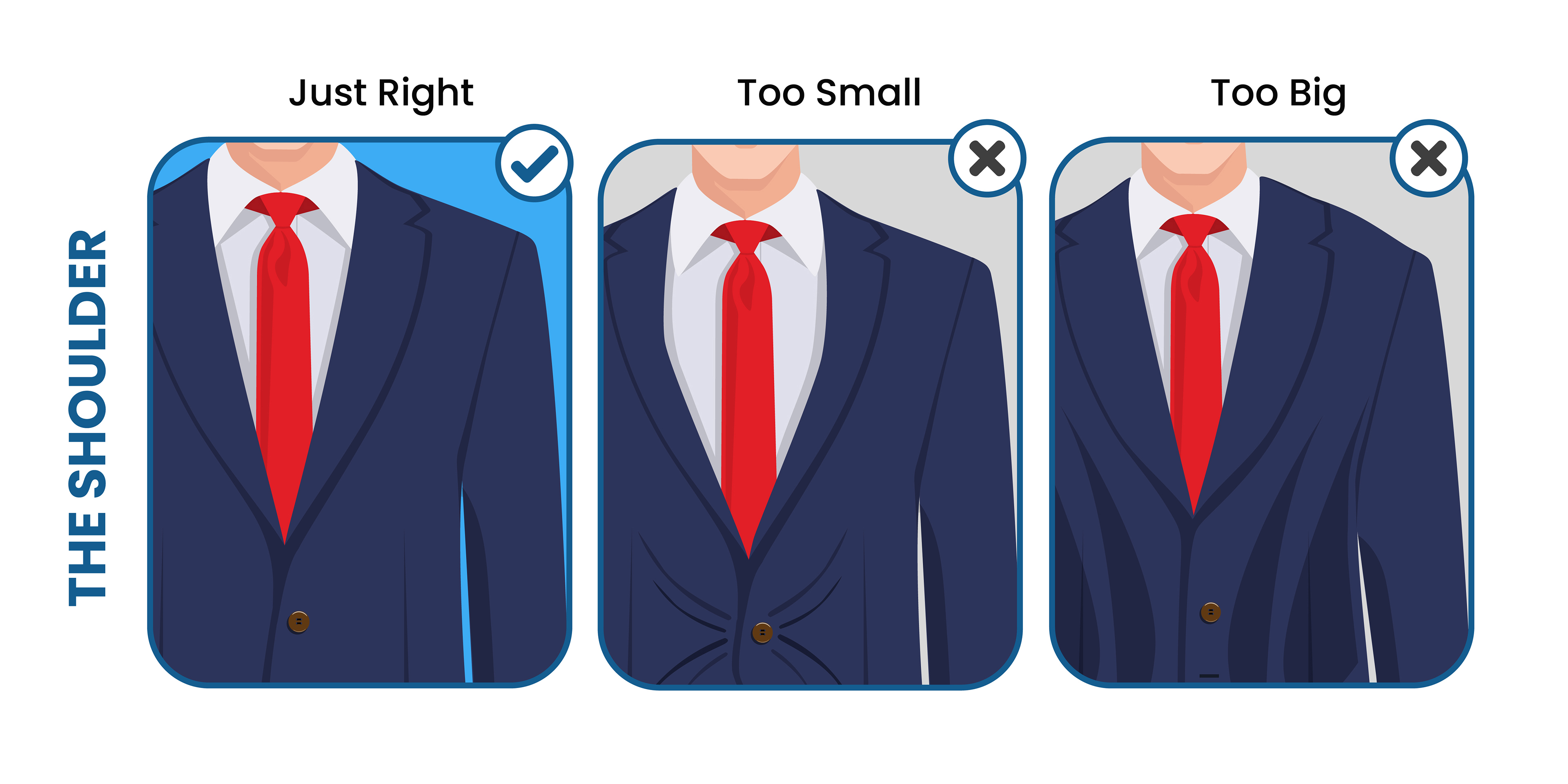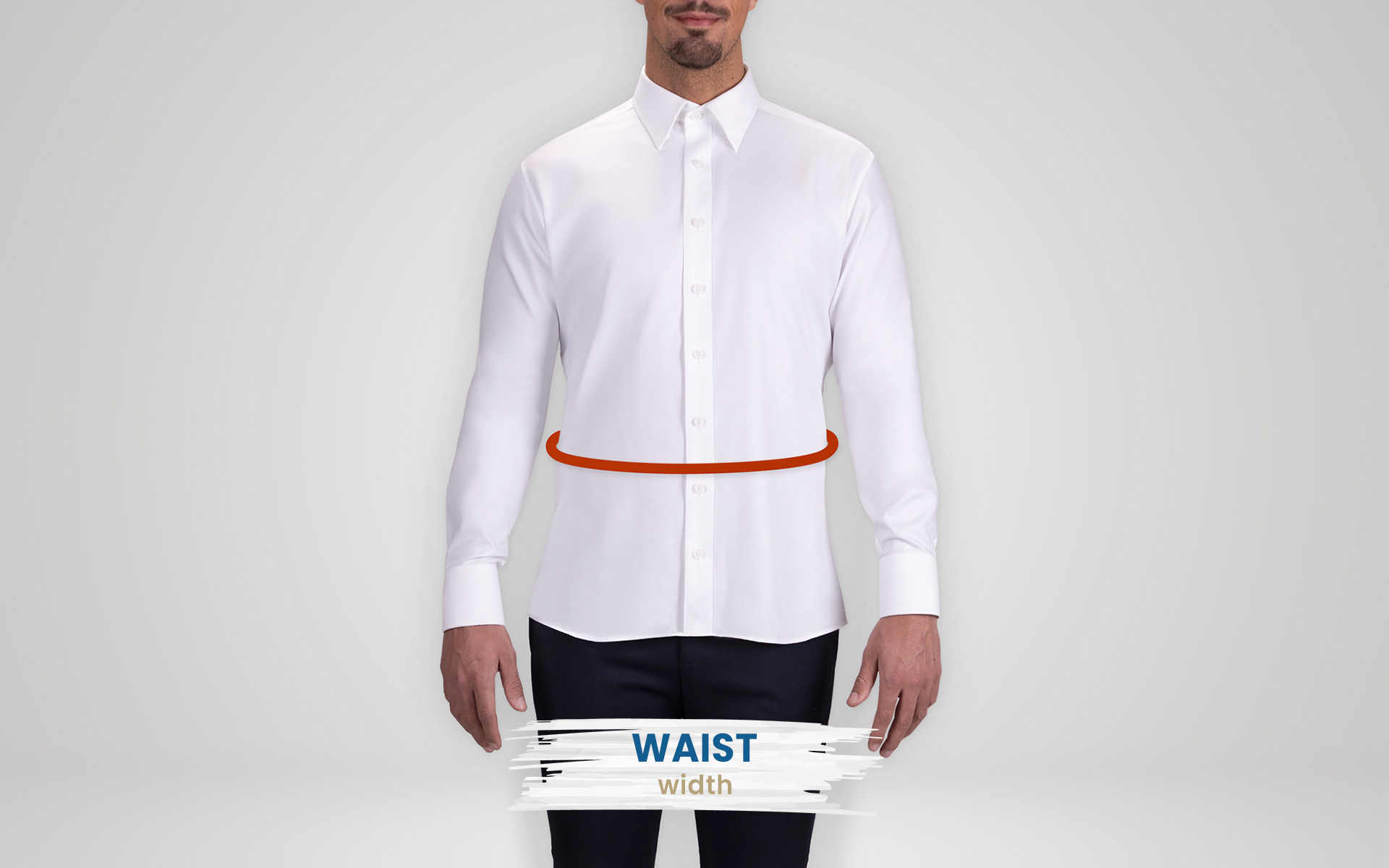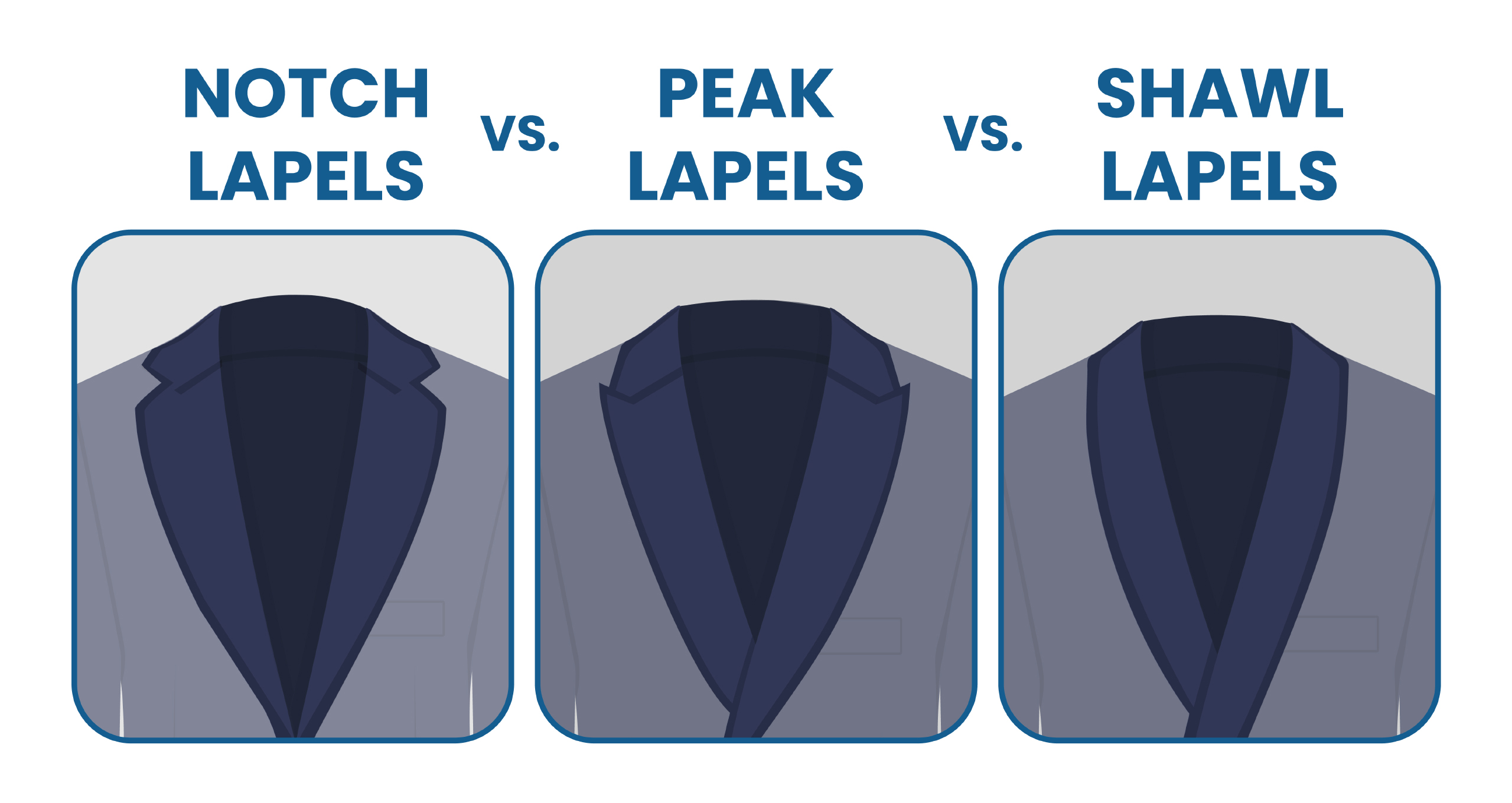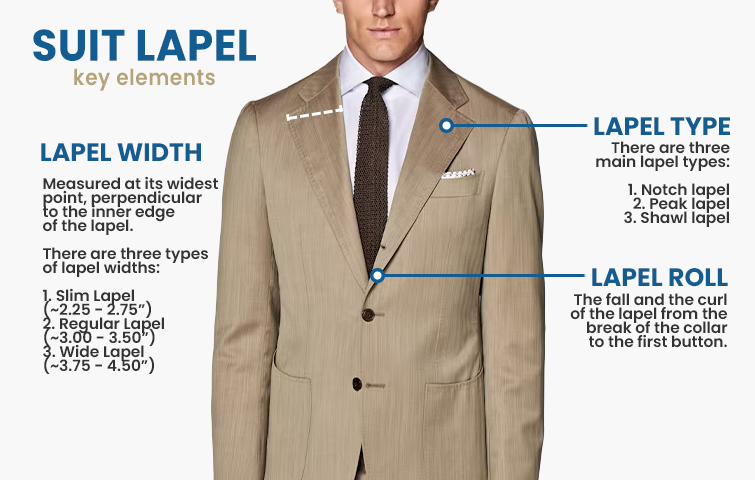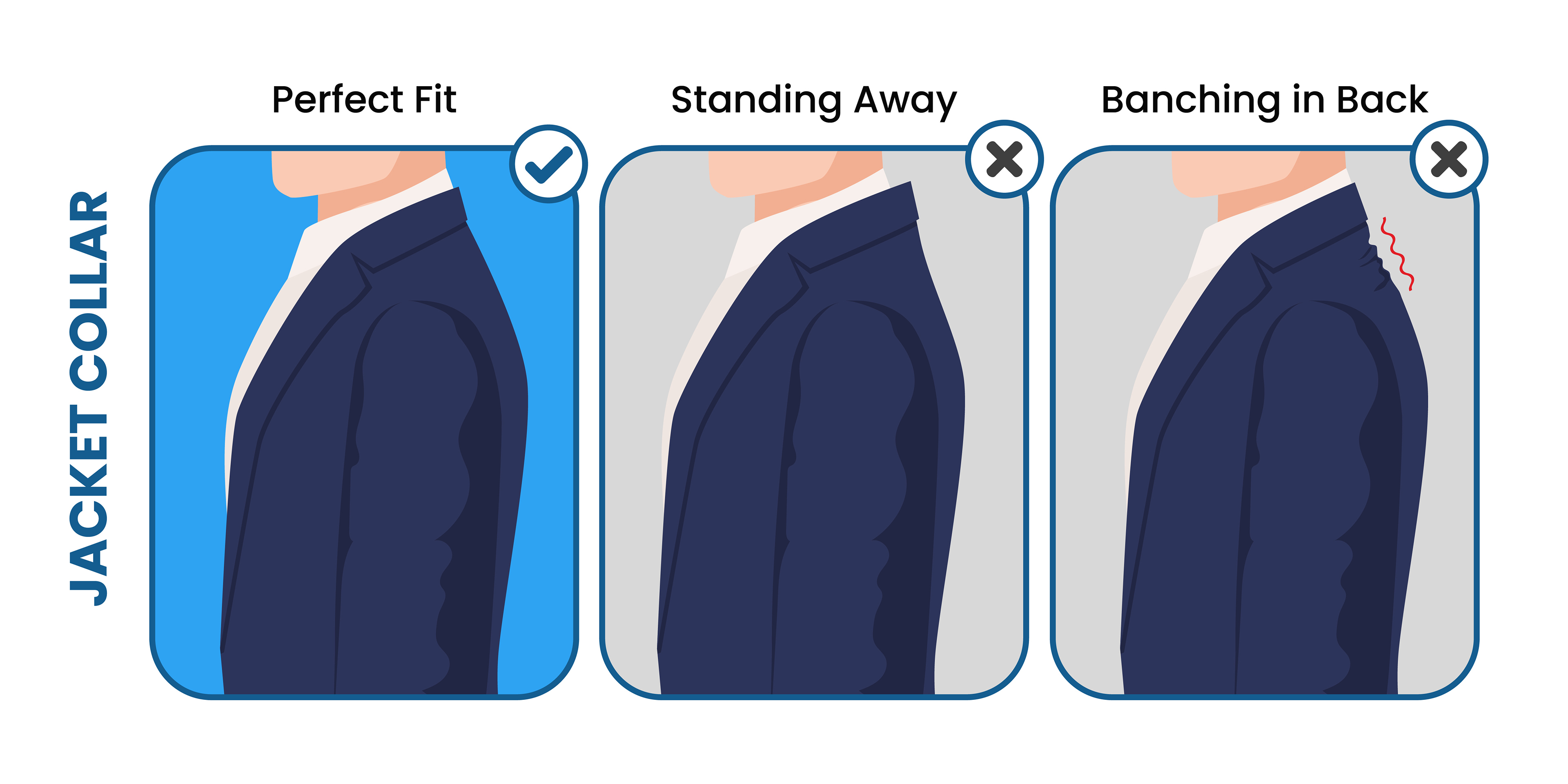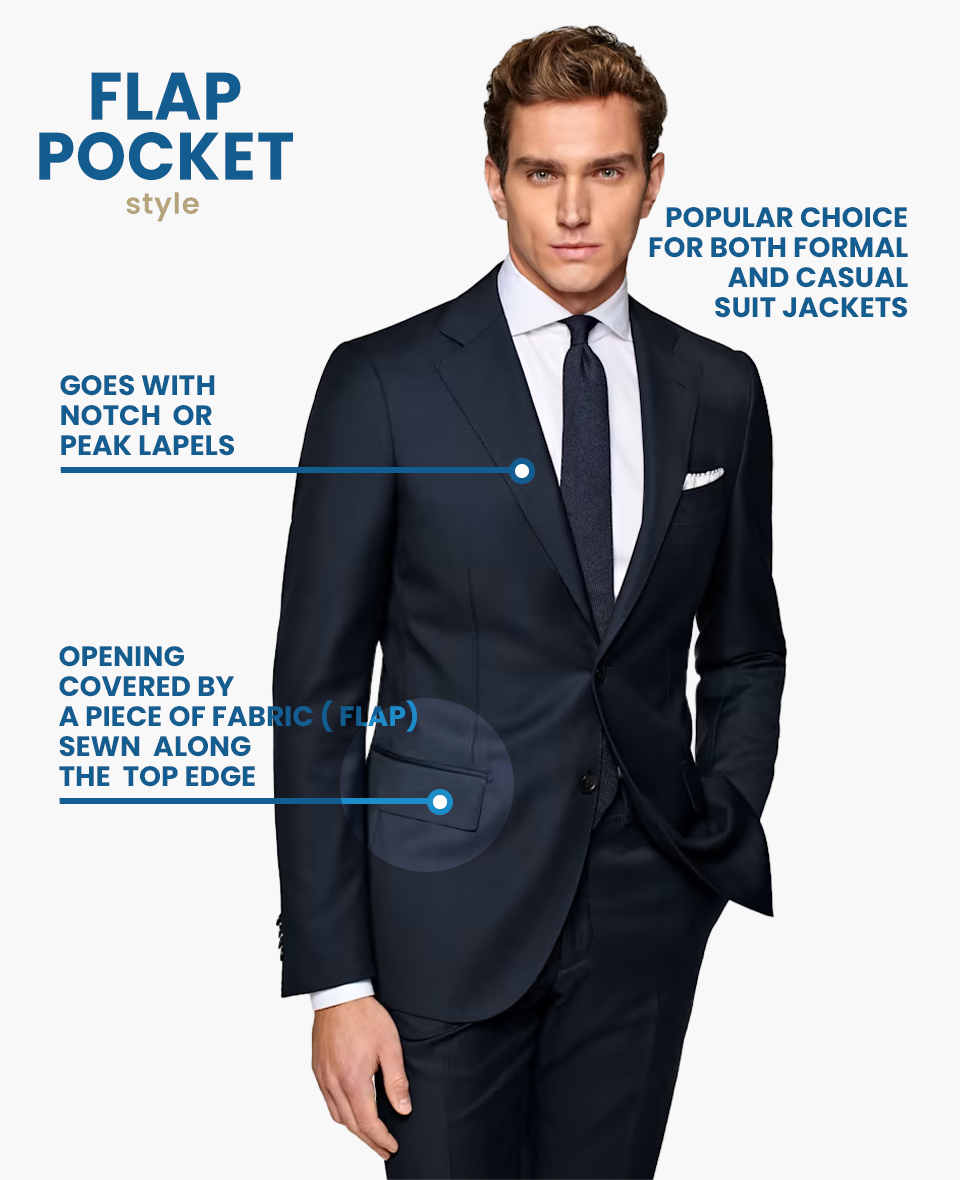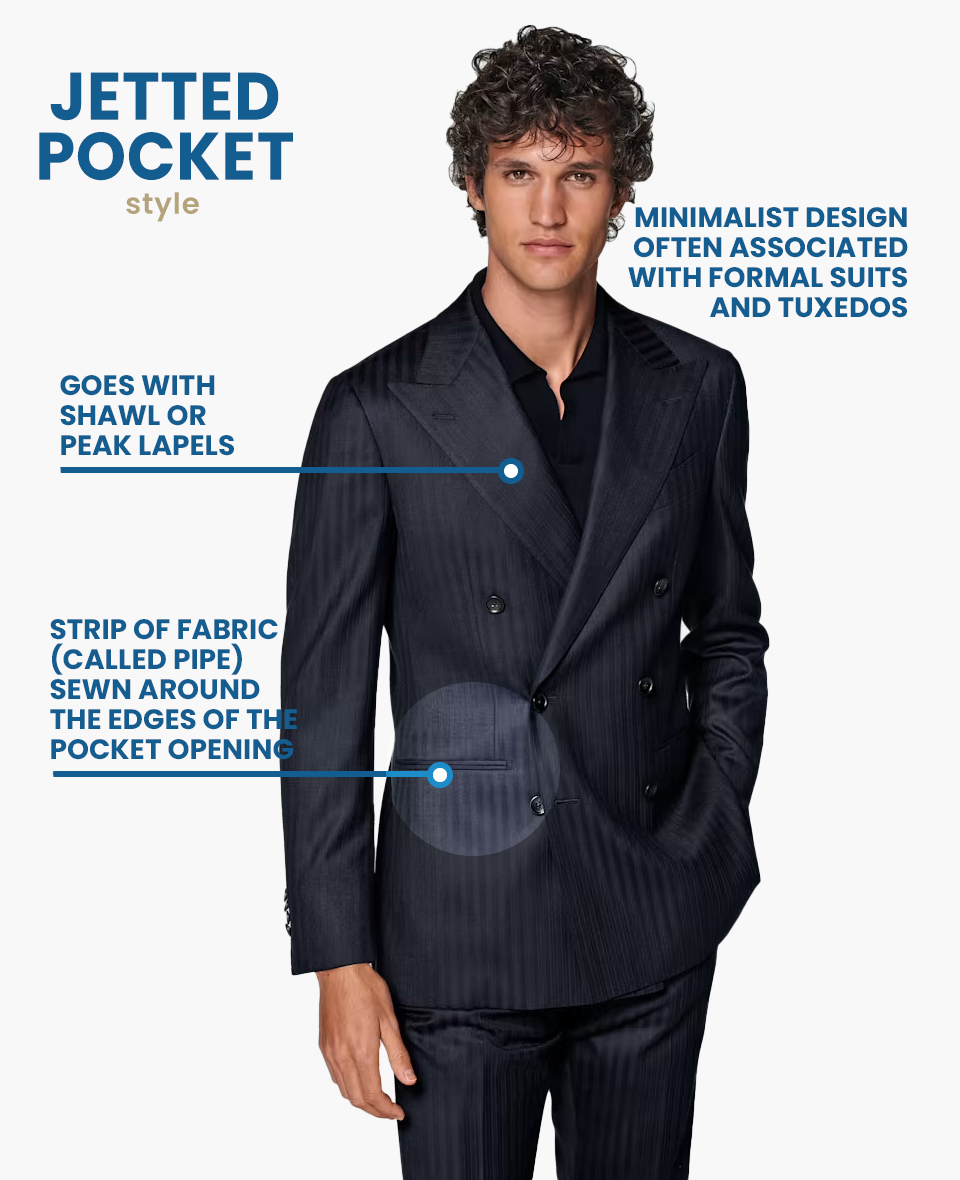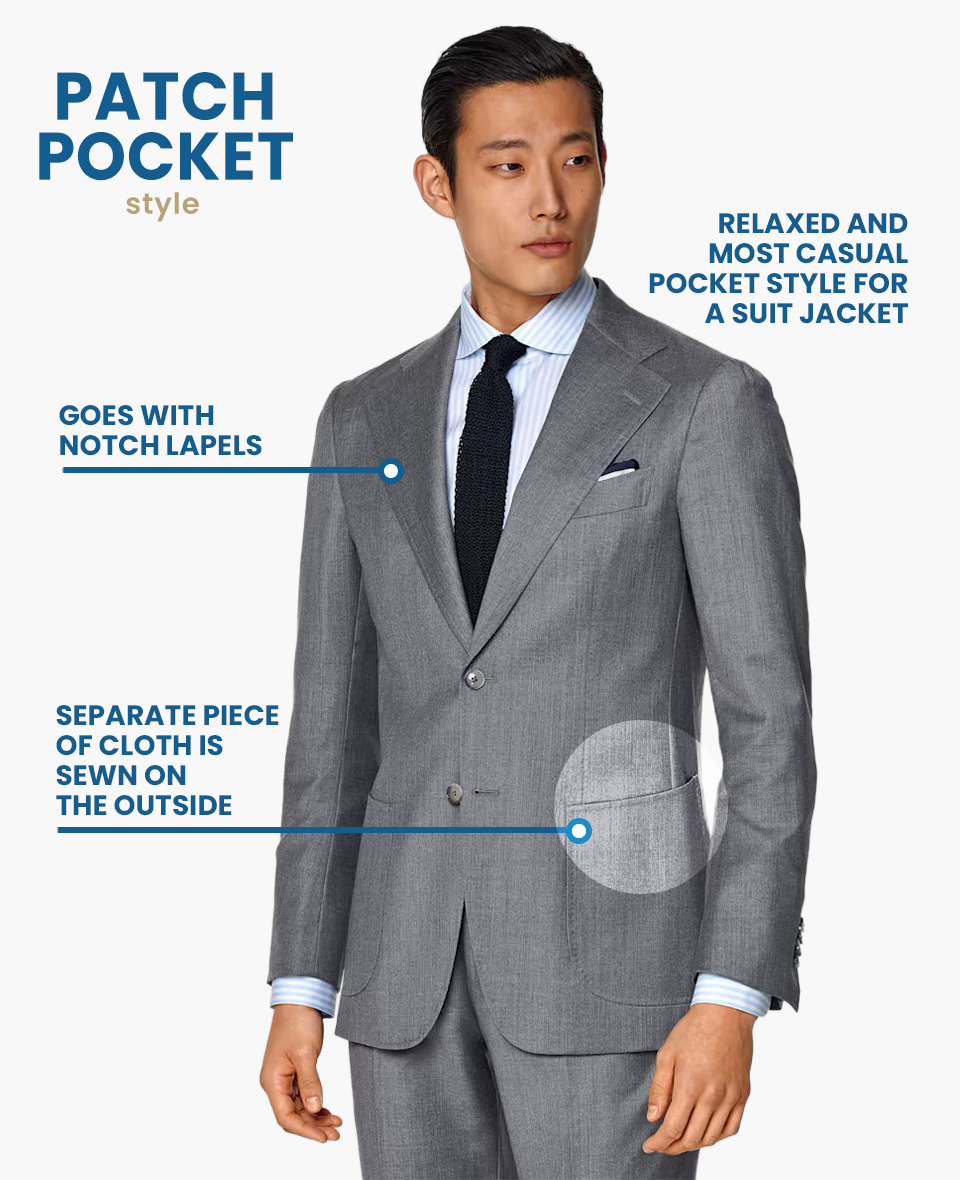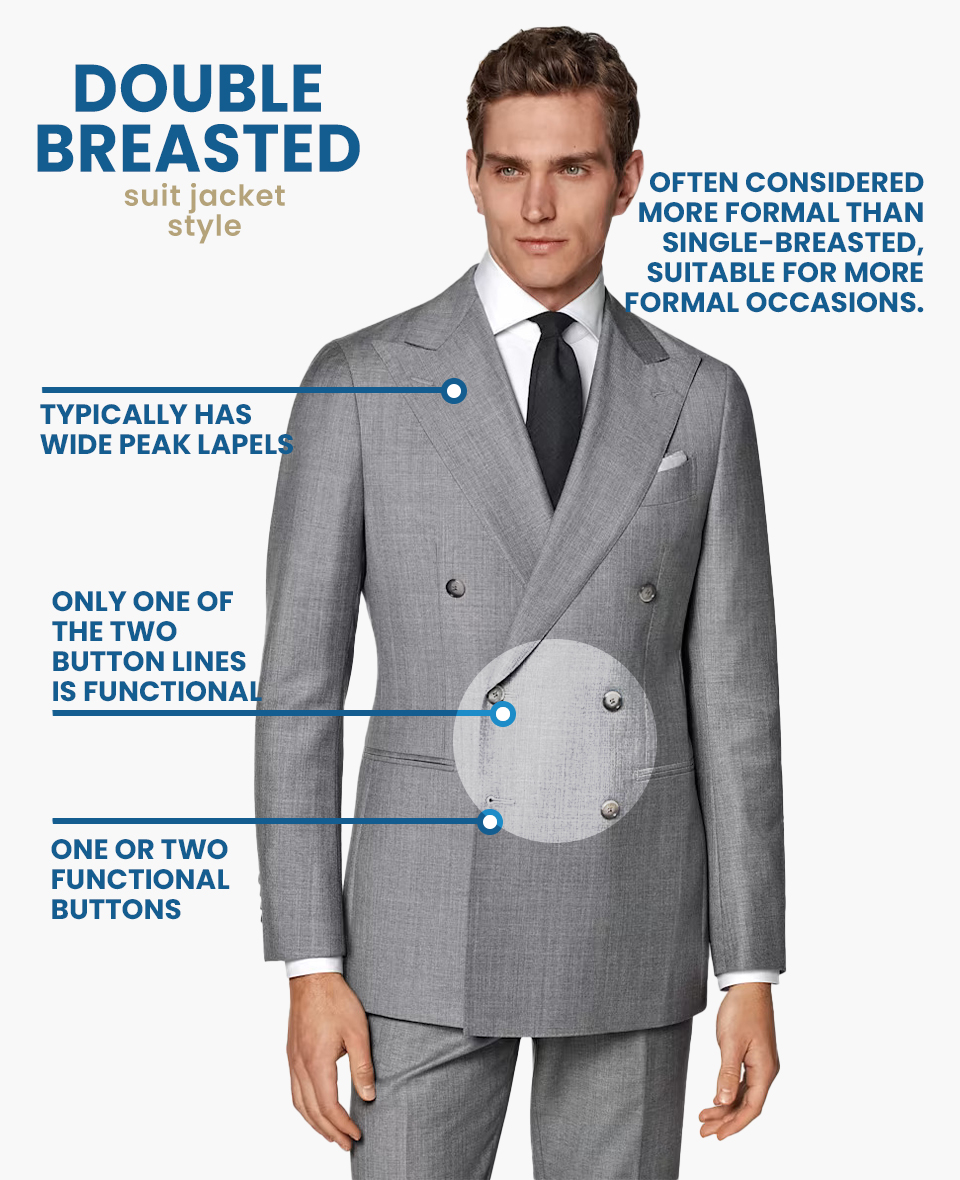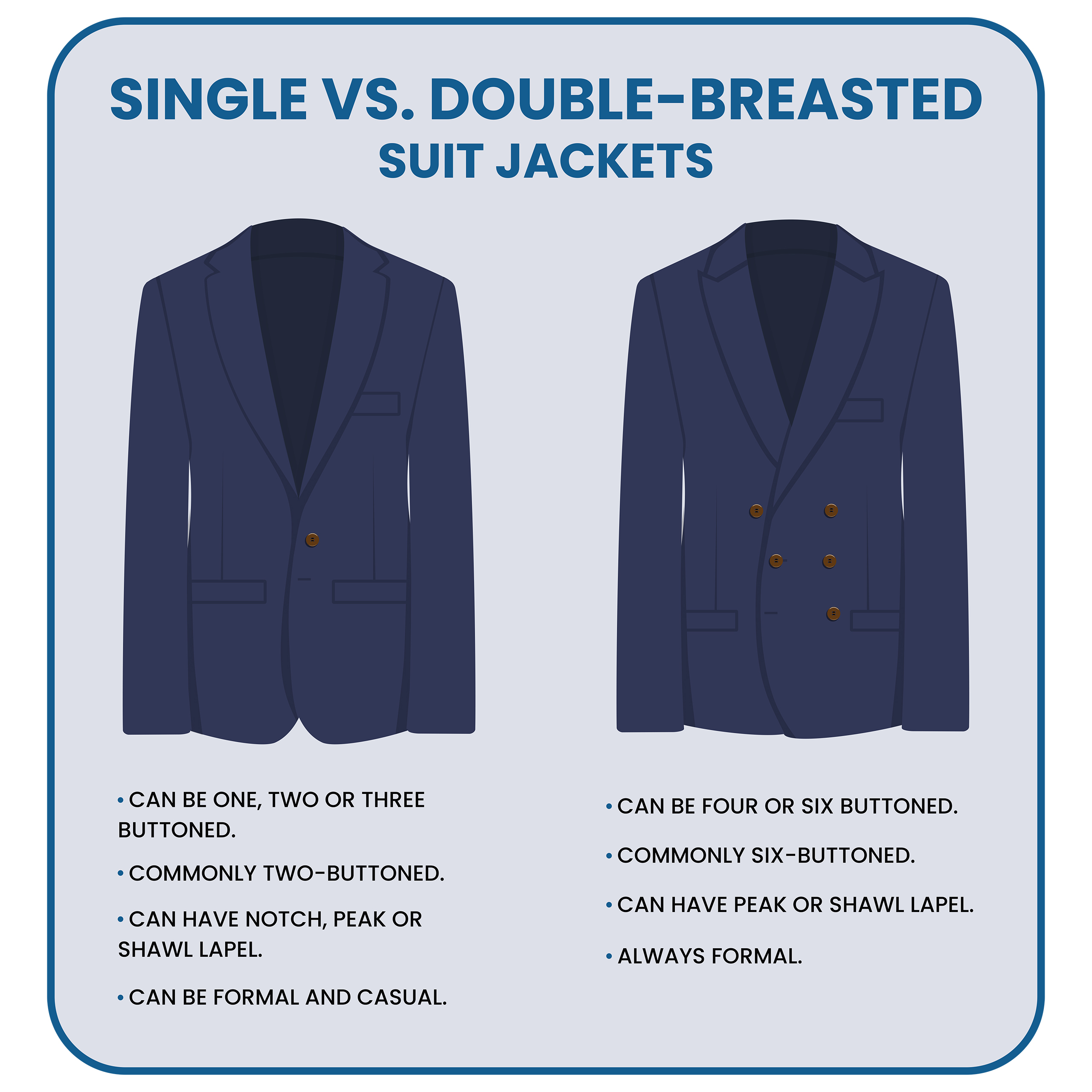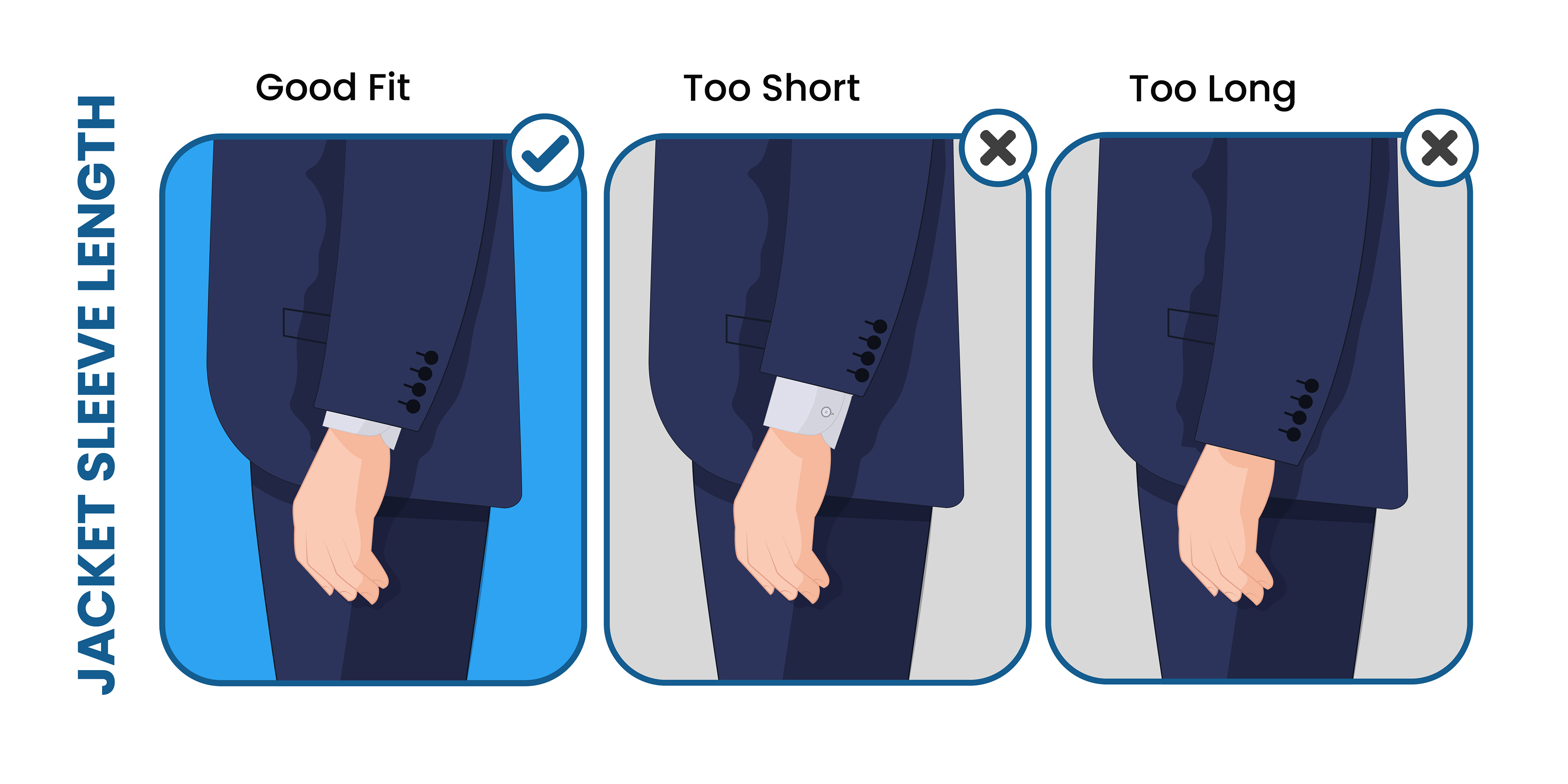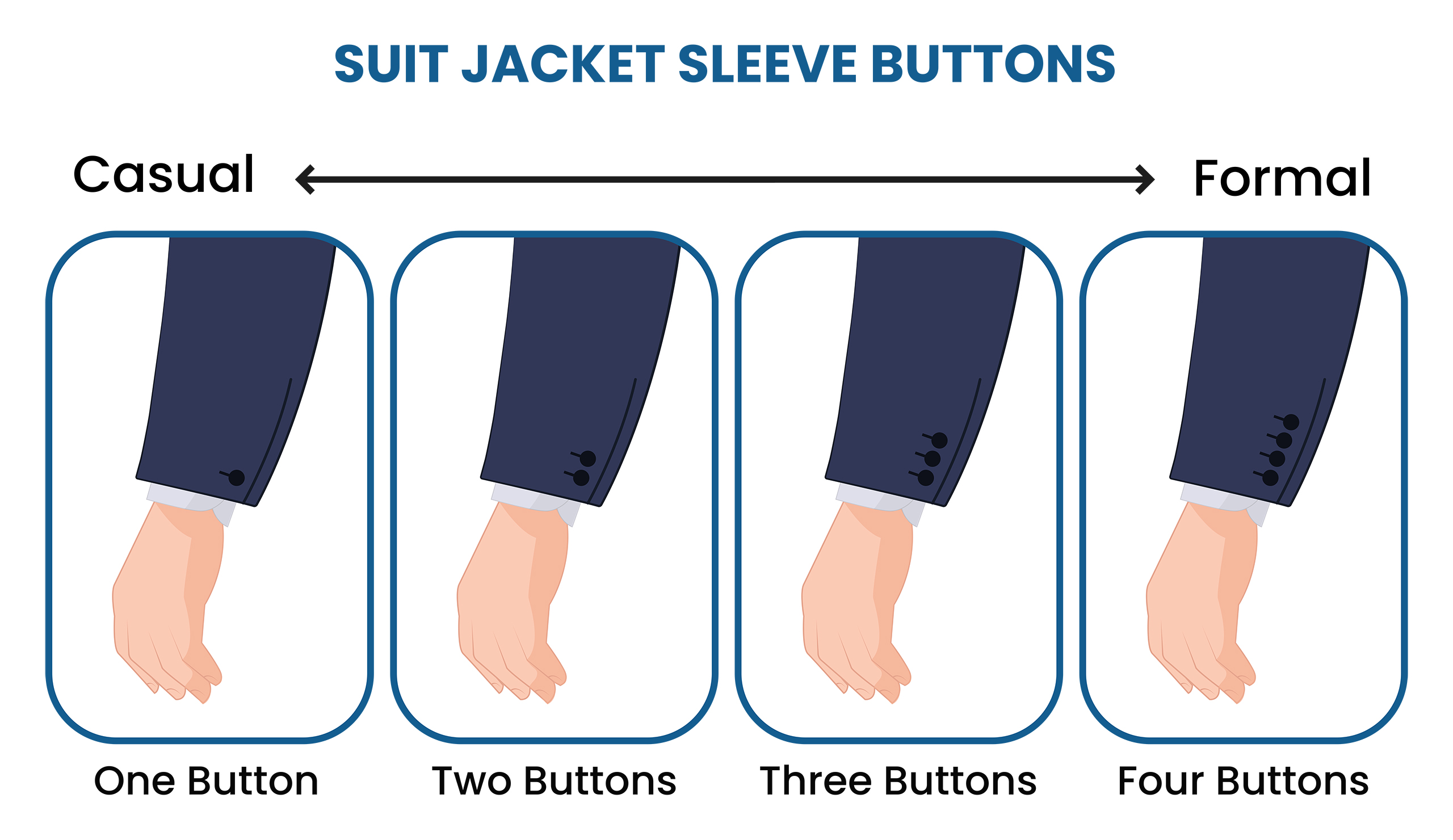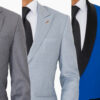Have you ever really thought about the make-up and anatomy of your suit jacket?
Knowing how it’s constructed can help you determine which suit style is best for you and which ones don’t work.
If you understand the design of each detail of your suit, you’ll better grasp its level of formality.
In addition, you’ll spot what needs adjustment and how to make your suit jacket more flattering.
The Basic Anatomy & Construction of a Suit Jacket
Many pieces go into putting a suit jacket together. Some parts are flexible; they can be done in various ways or not at all.
Each choice about the suit pieces affects the other areas and the overall look of your suit jacket.
Suit Jacket Lining
A lining on your suit jacket is another piece of fabric sewn inside. It adds weight to your suit jacket and helps it hold its form well, giving it shape.
In addition, the lining acts as a barrier, making the top layer of your suit jacket smooth.
The lining is visible when you open or remove your jacket.
Therefore, adding some style to your suit can also be fun with a splash of color or a vibrant print. It also can add warmth.
You don’t need to line your full suit. Instead, you can have a half-lined suit or a quarter-lined one, making your suit less bulky and cooler.
You can consider skipping the lining altogether for a very light feeling, but it may affect the appearance of your suit jacket.
Suit Canvas Construction
A suit canvas is similar to a suit’s lining in some ways. However, you don’t see the canvas; it’s inside the suit jacket.
The canvas is usually wool, which is excellent for creating structure. It gives your jacket shape and stiffness because it shapes the jacket to your body, preventing it from just loosely hanging off you.
The more you wear your canvased suit jacket, the better it will form to your shape. This is because your body heat causes the canvas to mold your contours.
It’s as if your suit jacket customizes itself to your form!
Just as with your suit lining, you don’t need to have a full canvas for your suit jacket. Half-canvas are acceptable, helping mold the top half of the chest and lapels.
However, you don’t ever want an un-canvased suit; it will look too flimsy.
Canvasing is very detailed work, so it increases your suit’s cost. Usually, suits with more canvas are more expensive.
For an inexpensive option, some suits skip canvas and substitute it with fused interlining. It is thinner and is glued on instead of sewn in.
Sadly, the glue eventually stops holding, and the interlining may warp and peel off. Nevertheless, this is a cheap-looking alternative; I recommend against fused interlining.
Suit Jacket Body
The body of your suit jacket refers to the part that covers your torso. Each jacket is made of singular pieces, and these elements come together to form your suit jacket as a whole.
Each section of your suit jacket influences how the entire jacket fits together and sits on you. Therefore, you can change the cut and the style by altering even one of these sections.
Chest Area & Darts
The amount of fabric in the chest area of your suit jacket is the drape of your jacket. Some suits have a full drape, meaning they have a lot of material. For example, a slim-cut suit has a smaller drape.
The chest of the suit jacket has darts; these are seams down the center of the top front of the jacket. Darts provide shaping to your jacket as well as a tailored appearance.
In addition, they take in some of the fabric, so the jacket doesn’t look so boxy.
Jacket Quarters
The suit jacket quarters are the two flaps in front that meet at your waist button along the bottom half of your jacket.
The interior seams can be cut so that the edge is a vertical line straight down; this style is known as closed quarters.
They can also have rounded corners, creating a curved, wide opening. This option is called cutaway or flyaway.
Which style is better? That depends on your body shape.
For example, open quarters are desirable if you have broad shoulders. They accentuate your lower half and draw the eye away from your shoulders. It’s very balancing.
Conversely, if you don’t have a lot going on in the shoulder department, go for a closed quarter. Your hips will seem more narrow.
Suit Jacket Back Vents
Vents are the verticle cup openings on the back of your suit jacket. They help move the bottom of your jacket aside when sitting, keeping your jacket free from creasing.
Back vents can also make sitting more comfortable, so you don’t have to fight with your suit jacket getting in the way.
There are a couple of different ways to vent a suit jacket, and not all jackets even have vents. For example, tuxedos and dinner jackets skip them for a smoother profile.
A single vent on a suit jacket is in the back center. It’s relatively informal and not a classy style. Single venting isn’t flattering and is somewhat rigid looking. Suit jackets with this style are considered cheap.
A double vent is located on each side of your suit jacket, just off-center in the back. This style is more professional and classy. These vents prevent the jacket fabric from pulling away and revealing your backside when you move.
Armholes & Shoulder Construction
Did you realize there’s a whole world of shoulder styles for your suit jacket? It’s true. Just a few adjustments to how it’s sewn, and you have a completely different look.
A structured shoulder is created by adding padding. No paddings are characteristic of unstructured blazers.
An extended shoulder is when the fabric reaches past your natural shoulder bone. It does require some padding to structure your shoulder, so it doesn’t droop.
Roping shoulders are a style that’s created when the sleeve seam is attached further up the shoulder than usual. As a result, it looks slightly rolled along the seam, thus its name.
A unique style known as pagoda shoulders happens when the shoulders of your suit jacket create a slope down from the collar and back up again at the seam.
Or, skip all of these and go with natural shoulders or soft shoulders by doing no shaping or padding.
No matter which style you opt for (or don’t), it’s imperative that your suit jacket’s shoulders fit you well.
If the sizing of the shoulders is not correct, your entire jacket will appear either too small or oversized. The same can be said for the armhole.
Not all armholes are cut the same; a smaller opening gives your suit jacket a slimmer cut. It sits closer to your body and hugs your torso.
A wider armhole opening makes your jacket more loose.
Waist Drop
The waist drop on your suit jacket refers to the difference between your chest and waist measurements. It defines how narrow the waist of your suit jacket is.
For example, the larger your drop is, the greater the narrowing line. Therefore, a significant drop ensures a slimmer-fitting suit.
The waist drop gives specifics to ensure a well-tailored appearance. Unfortunately, most off-the-rack suits only have a general waist drop size; not all men will look best this way.
Different Parts of a Suit Jacket
What defines the style of a suit? Unfortunately, there is no single part of your suit jacket that does.
Think of your suit jacket parts as items on an à la carte menu. You can determine the style of each element, and all of these together will create the final style of your suit jacket.
Lapels
Your jacket lapel is the fabric attached to your jacket’s collar, just below it. The lapel style plays a tremendous role in determining the formality of your suit.
There are three styles of lapels, and it’s one of the first things people will notice on your suit jacket.
- A notch lapel is the standard style; it’s casual and acceptable for most settings.
- Peak lapels have points that extend past the collar and are formal.
- Finally, a shawl lapel is a rounded style typically found on tuxedos.
Lapels can be skinny or wide. Skinny lapels help give the appearance of broad shoulders. On the other hand, wide lapels make your shoulders seem less wide because the fabric fills up much of the space.
The best size lapel depends on your size and which part of your body you want to play up or detract attention from. Wide lapels are typically recommended for large men and narrower lapels for thin men.
You may notice a slit high up on your lapel. It’s your lapel hole. Originally, suits had a button on the opposite side, and you could close up your lapel to protect your chest during inclement weather.
Today, however, it is commonly where you can hold a flower or other accessory.
Collar
The fabric around the back of your neck and folded over is your suit jacket’s collar.
Your collar must lay flat, with no gapping or bunching. The way your collar sits on your neck is one of the first indicators of a poorly fitting suit.
Where your lapel fabric attaches to your collar is your suit’s gorge. Its shape, width, and placement can all vary.
For example, your suit jacket may have a high gorge or a low gorge, although it’s usually level with your shoulders.
Pockets
Your suit’s pockets can say a lot about your suit’s style. The two most common pocket types on a suit jacket are flap or jetted pockets, with a less-common third style, patch pockets.
Flap pockets are characterized by the extra layer of material covering the pocket’s opening. The added material makes the pockets appear a little bulky. It’s a casual style.
On the other hand, jetted pockets are only a slit opening in the fabric and are formal.
Each of these types of pockets is located inside the jacket, with openings on the outside. They can be angled or straight.
But keep in mind that angled is more casual, so it should only be used for flap pockets.
A very sporty pocket is a patch pocket. It’s nothing more than another piece of fabric sewn to the top of the jacket, creating the pocket on the outside. It’s a sporty style and is more common on blazers.
Some suits also have a third pocket on their lower half, called a ticket pocket. It’s directly above one of the side pockets and is slightly smaller.
The breast pocket is located on the chest and can have a straight or curved edge. It holds your pocket square or some other item that is very thin.
A breast pocket is usually located on the left side, but either side is acceptable.
Buttons
The style of your suit determines the amount and placement of the buttons. For example, a double-breasted suit has between 4-6 buttons placed slightly off-center.
A single-breasted suit has between one and three buttons down the center. Taller men can wear a suit jacket with three buttons.
If your suit has 2 or 3 buttons, remember to leave your bottom button undone when standing up.
The placement of your button determines where your lapel ends. Where your button is located is called the button point, and it can be placed high or low. This would also create a long or short lapel.
Again, the best placement for your button point depends on your body shape.
For example, a heavier man should go with a low button point because it’s more slimming than a high button point.
Sleeves & Sleeve Cuffs
The suit jacket sleeves start from the shoulder tip and finish at the wrist where your ulna bone ends, which is slightly above the hinge.
Your sleeve cuffs also have buttons. There are typically four of them near the cuff, and even your sleeve buttons have style options.
Typically, sleeve buttons are spaced and slightly separated from each other.
Kissing or waterfall buttons are one style for your sleeve buttons, where they touch each other or even overlap a bit. This is a newer trend in suit jackets and is considered a sign of a well-tailored suit.
Working buttons are just like they sound; they actually work, and you can open them. Working buttons aren’t particularly useful but might help convert your appearance from dressed up to laid-back.
Unfortunately, off-the-rack suits don’t usually offer working buttons, so these often signify custom-made or designer suits.
Hi, I’m Alex, and I’ve studied and specialized in styling in Rome. Through my writing, I want to help men dress well and learn the purpose and significance of suits and other formal attire. My final goal is to make men more confident in their wardrobe choice and life in general.
